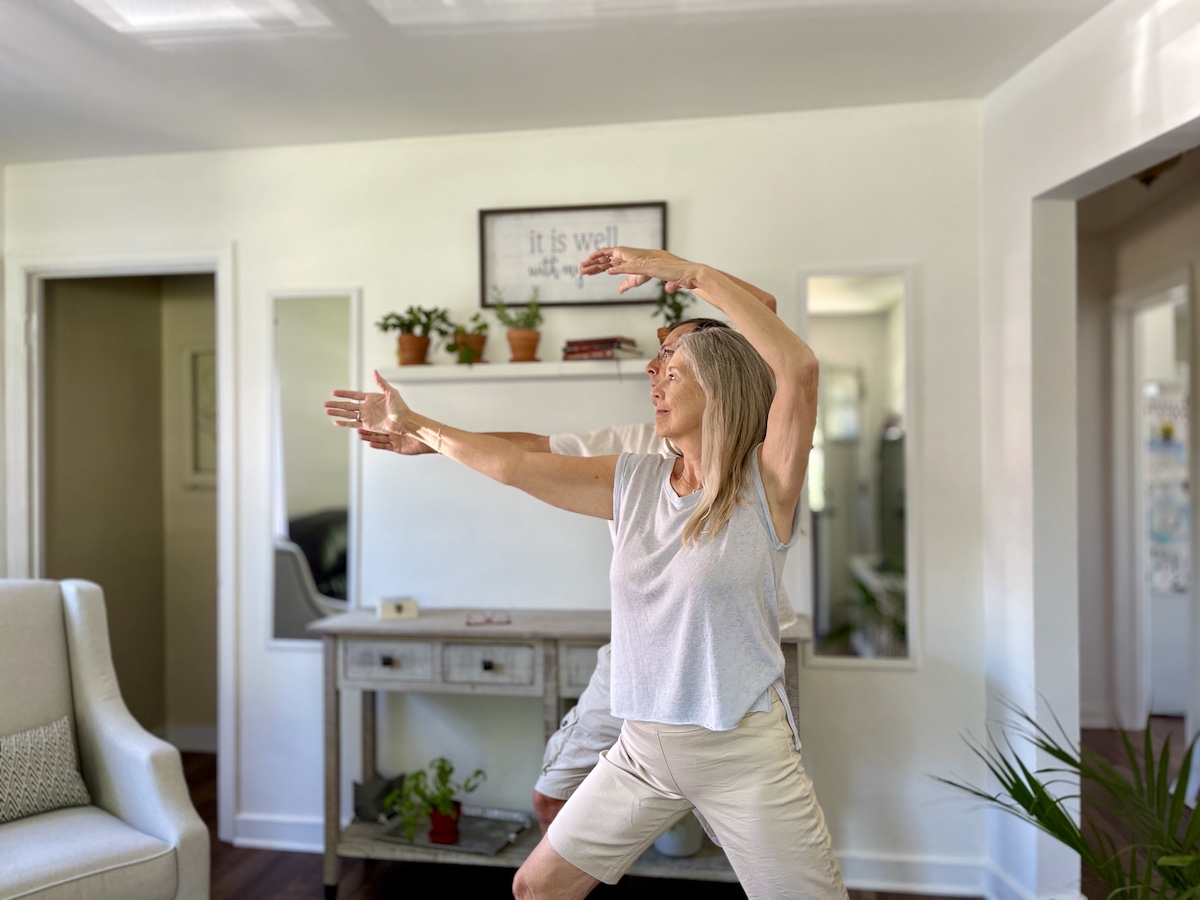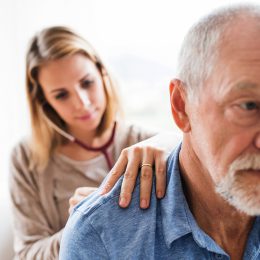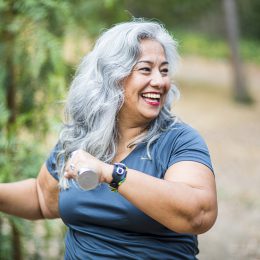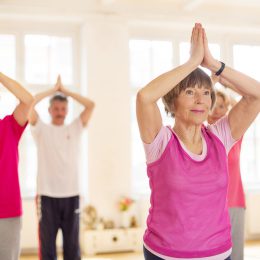5 Ways to Manage Osteoarthritis Pain Without Surgery
You can’t cure OA, but certain lifestyle changes can help you feel a whole lot better.

Osteoarthritis (OA) was once considered an inevitable part of aging—your joints simply wore out after so many decades of use.
That’s not only inaccurate (not everyone develops osteoarthritis with age), but it also implies that you’re completely powerless against the disease. While it’s true that there’s no cure for OA, there are a lot of good options to help ease your symptoms and slow down the progression of the disease.
In case you need a quick refresher: OA is the most common form of arthritis, affecting more than 32 million American adults. It happens when cartilage, the protective tissue that acts as a cushion in your joints, wears away. This can happen for a variety of reasons, including an injury to a specific joint, overuse (think: knees after decades as a marathon runner), and yes, aging. Without that cushion, bones that meet at a joint can rub together, causing stiffness, pain, and inflammation.
OA is a degenerative joint disease, meaning it slowly gets worse over time. In its most advanced stages, your doctor may suggest joint-replacement surgery as the best option to regain normal functioning and improve quality of life. But that’s considered only when other treatment options—which may include medications and lifestyle changes—don’t help enough.
What do experts recommend doing first? Here are five healthy habits everyone with OA should adopt.
Add SilverSneakers to your wellness routine! Classes and events are happening daily at participating gyms, online through SilverSneakers LIVE, and at community centers near you. Activate your free online account to get started.
Habit #1: Establish a Consistent Exercise Routine
If there’s one strategy that everyone should implement for osteoarthritis management, it’s moving more, says Neel Anand, M.D., professor of orthopedic surgery and director of spine trauma at Cedars-Sinai Spine Center in Los Angeles.
“This does not mean gentle movement that you do occasionally as a break from sitting,” he says. “You need to regularly move your joints through a full range of motion and do weight-bearing exercises so they can get stronger.”
The best workout routine for healthy joints includes a mix of:
*Low-impact cardiovascular exercise like walking, cycling, or swimming
*Strength training, which may include bodyweight exercises as well as those performed with resistance bands or free weights
*Mobility exercises, such as yoga or this 30-minute follow-along routine, designed to help you maintain or improve a pain-free range of motion
It may seem like strength training is a bad idea if you have painful joints, but the opposite is true, Dr. Anand says. Strengthening the muscles that surround and connect to your joints can reduce stress placed on the joint itself, helping ease pain and prevent future damage.
Just don’t expect results overnight. Studies looking at the benefits of exercise programs for people with hip osteoarthritis, for example, found that it takes about 12 weeks for pain levels to diminish and strength and mobility to improve, according to the Arthritis Foundation.
Want more guidance on how to exercise with OA? Check out our guide to crafting the perfect safe workout routine.
Habit #2: Eat to Beat Inflammation
Addressing chronic inflammation is an important way to treat osteoarthritis, and what you put on your plate can be powerful, says Erin Kenney, R.D., author of Rewire Your Gut.
“Diet can play a significant role in alleviating pain and reducing inflammation,” she says. Her suggestion: Stock up on foods rich in omega-3 fatty acids (a.k.a. healthy fats), fiber, and antioxidants. Good options include:
- *Fatty fish like salmon, mackerel, sardines, and anchovies
*Walnuts and almonds - *Ground flaxseed or chia seeds
*Olive oil
*Leafy greens like spinach, kale, and romaine
*Cruciferous vegetables like broccoli, brussels sprouts, cabbage, and cauliflower
*Tomatoes
*Fruits like strawberries, blueberries, and cherries
It’s also worth considering the foods known to increase inflammation, Kenney says. These include processed meats, white bread, fried foods, and sugar-sweetened beverages and treats. Beyond their lack of nutritional value, “high consumption of these foods crowds out the space for other nutrient-dense, anti-inflammatory foods,” Kenney says.
Habit #3: Maintain a Healthy Weight
Regular exercise and healthy eating have the added benefit of helping you get to or maintain a healthy weight, which is crucial for OA management. That’s because excess weight puts additional pressure on weight-bearing joints like the hips, knees, and ankles, potentially speeding up the breakdown of cartilage.
On top of that, fat tissue produces a specific kind of protein (called cytokines) that promotes inflammation throughout the body, according to the Arthritis Foundation. Reducing fat stores may help ease pain in any affected joint, while gaining more fat tissue can make OA worse.
Habit #4: Explore Pain Prevention Strategies
When your OA flares up and is especially painful, it may be an automatic reaction to reach for a pain reliever, whether it’s a topical nonsteroidal anti-inflammatory drug (NSAID) such as Voltaren or an oral NSAID like aspirin, naproxen, or ibuprofen.
If you’ve discussed the risks and benefits with your doctor, these OTC drugs can be an effective way to get fast relief, but it’s also important to put strategies in place to reduce risk of flareups in the first place, says Medhat Mikhael, M.D., pain management specialist at MemorialCare Orange Coast Medical Center in Fountain Valley, California.
In addition to everything mentioned above—exercise, healthy eating, and maintaining a healthy weight—Dr. Mikhael suggests trying any of the following techniques to see what works best for you:
Subscribe to our newsletter
It's quick and easy. You could be one of the 13 million people who are eligible.
Already a member? Click to discover our 15,000+ participating locations.
Follow Us
Deep breathing
Acupuncture
Tai chi
Physical therapy
Meditation
These drug-free pain-management strategies can have a ripple effect, he says. For example, you may find that deep breathing helps you sleep better, which gives you more energy for regular exercise, and that can break a pain cycle.
Habit #5: Tell Your Doctor Everything, Especially About Meds You Take
Regularly checking in with your doctor can help you review how your OA is progressing—or hopefully how it’s slowing down. In addition to discussing your symptoms and any changes in activity or nutrition, talking about medications is especially crucial, Dr. Anand says.
Some prescriptions that may have nothing to do with your osteoarthritis could be impacting your bones. For example, common medications that can harm your bones include:
*Glucocorticoids that are given for asthma, autoimmune disorders, adrenal insufficiency, and allergies
*Some antidepressants, especially selective serotonin reuptake inhibitors (SSRIs)
*Proton-pump inhibitors, often used for heartburn
*Certain diabetes medications
*Some blood thinners and anticoagulants, given for heart conditions
Just because you’ve been prescribed medications like these doesn’t mean you’re automatically making your OA worse, and it also doesn’t mean you should discontinue them to protect yourself. Instead, Dr. Anand says your doctor may suggest more frequent screenings to ensure they’re not having a problematic impact.
Your job is simply to make sure your doctor is aware of everything you take, including prescription and OTC drugs, along with any vitamins and supplements.
Activate Your FREE SilverSneakers Online Account
Get hundreds of free SilverSneakers On-Demand videos and stay in touch with us by creating your free online account. You don’t have to be a SilverSneakers member to get on-demand workout videos, health and fitness tips from SilverSneakers, and more.
SilverSneakers members can go to thousands of nationwide gyms and fitness locations, plus take SilverSneakers LIVE online classes led by specially trained instructors and designed for all fitness levels and abilities – at no additional cost. If you have a Medicare Advantage plan, it may include SilverSneakers. Check your eligibility here.
Already a member? Get your SilverSneakers member ID, search for locations near you, and all the health and wellness resources you need by logging in to your online member account here.





